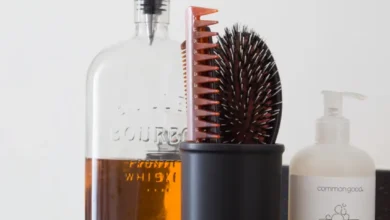How to clean hair brushes for lice 2022

How to clean hair brushes for lice ? When dealing with head lice, it is normal to ask what to do with hairbrushes once the lice have been removed. Since hairbrushes may be costly, this question is natural. Some customers have even gone so far as to dispose of all of their hairbrushes in an effort to prevent the lice from reinfesting their hair in the future. That is not required in any way! When it comes to dealing with lice and hairbrushes, we will explain both what you should do and what you should not do.
CAN YOU GET LICE FROM USING SOMEONE ELSE’S BRUSH?
When dealing with head lice, it is normal to ask what to do with hairbrushes once the lice have been removed. Given the potential cost of hairbrushes, this is a reasonable question. Some customers have even gone so far as to get rid of all of their hairbrushes in order to eliminate the possibility of being infected again. That is not at all required! We’ll advise you on what to do and what not to do when it comes to dealing with head lice and hairbrushes.
HOW LONG CAN LICE LIVE ON A HAIRBRUSH?

You may be curious about the length of time that head lice can survive on a hairbrush. Lice that have been removed from a person’s head instantly begin the process of dying; since they no longer have access to their food supply or the warmth they need to survive, the process is complete within twenty-four hours. In the event that the infestation was very recently identified, you may start inspecting your grooming equipment out of an abundance of caution and question whether it is possible to spot lice on a hairbrush. You will be able to see a live louse on a bush if there is one there. Visible and relatively little bugs that lack wings and are known as lice. It’s possible that the egg (nit) is so little that you can’t even see it. Nits that have been removed from the scalp do not constitute a risk since they are unable to reconnect to the hair.
How to clean hair brushes for lice

After treating their children for head lice, some parents are all too quick to toss away their old hairbrushes and purchase brand new supplies out of the unreasonable worry that using the old brushes may re-infest their children and their families. We appreciate the concern you have, however doing so is not required at this time. The following is a list of some recommendations that may be used to rid your hairbrush of lice:
Brushes should be dipped in water.
This is a quick and easy method, and it’s completely free, for getting rid of any lice that could still be lurking on your hairbrush. Put your hairbrushes in the water that is in the sink once you have filled it with water. Because lice can hold their breath for exactly eight hours, the brushes need to be completely immersed for at least that amount of time.
Utilize the Dishwasher
You may want to think about using this procedure, which depends on the temperature of your dishwasher to determine whether or not it is successful in removing lice from a hairbrush you are trying to clean. In addition, the extreme temperature has the potential to wreck hairbrushes.
Freeze Your Brush
When assisting customers, we often suggest using this approach. It’s fast and needs minimal effort. Place your hairbrushes in a ziplock bag, then place the bag in the freezer for the duration of the night. Any lice that may be on the brushes will perish from the cold.
Use Alcohol
Although alcohol is an effective method for disinfecting instruments, it is not effective against head lice or their eggs (nits). Lice can hold their breath for a short period of time, and they are quite robust. You should not use this procedure for anything other than sterilizing your hairbrushes; it will not work for any other purpose.
Don’t Use Hairbrush
Putting the hairbrush away for a day is another another sensible solution to the problem. The next day, any insects that were on it will no longer be alive. Keep in mind, however, that regardless of the decision you make on the best way to deal with hairbrushes, the fact remains that the insects do not often find their way onto hairbrushes. They navigate through the hair by scooting around it, and if they detect another human head in the area, they will crawl from one head to the next. Lice in the head draw blood for nutrition, and they can only live if they are allowed to feed on human scalps. They try to avoid landing on hairbrushes as much as possible since they cannot survive for more than a day without blood.
CONCLUSION
Because hairbrushes, hats, and helmets are all potential vectors for the spread of head lice, it is in everyone’s best interest to avoid sharing these items. Bear in mind, however, that around 95% of head lice cases are carried directly from one human head to another, which means that just being in close proximity to other people puts one at danger of contracting head lice; in today’s world, head lice are an unavoidable reality.



